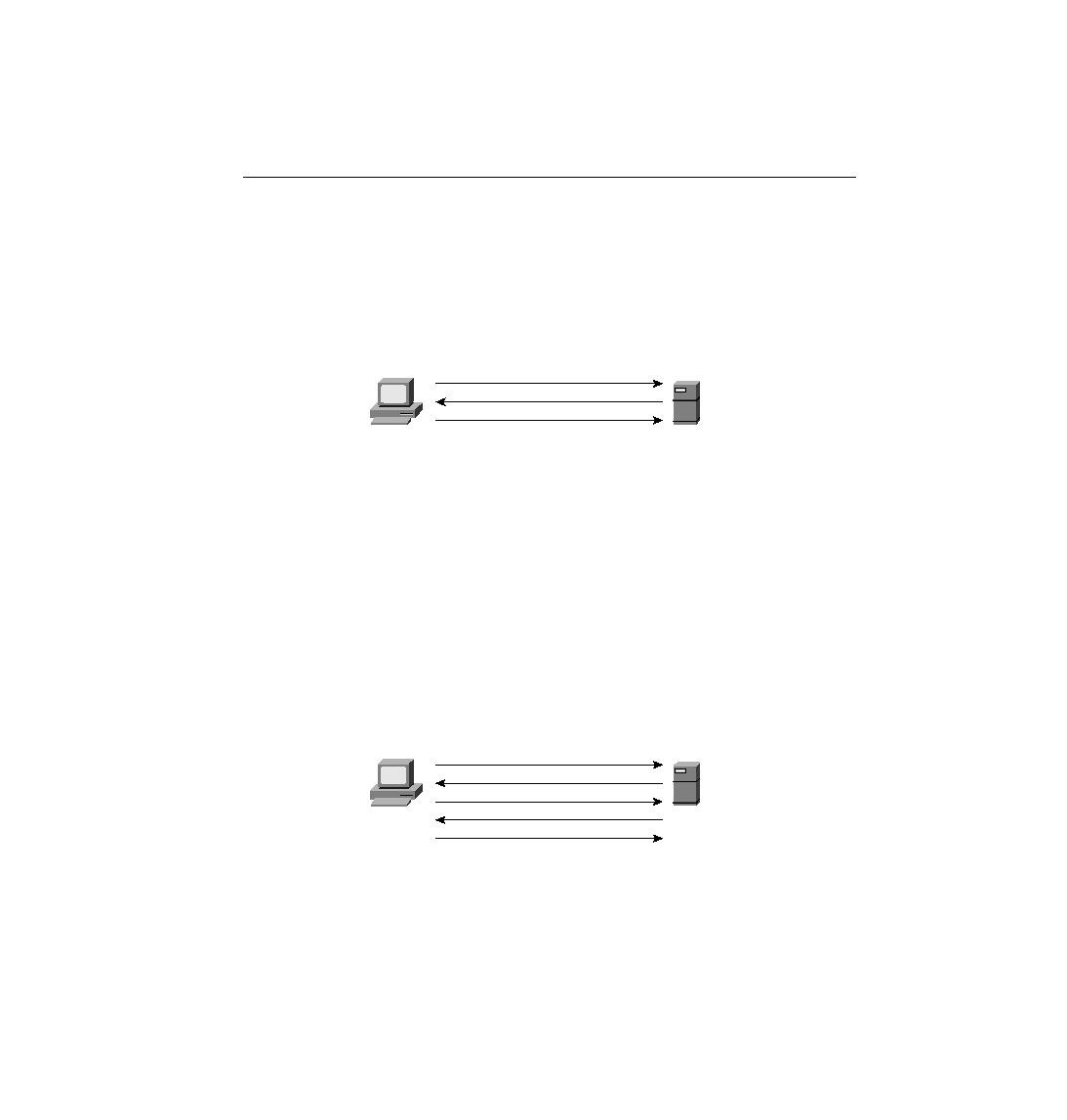
to change directories, list files using wildcard characters, transfer multiple files with a single
command, and use a variety of character sets or file formats. More important in this context is
the basic operation of FTP. Figures 5-15 and 5-16 show a typical FTP connection--or, better
stated, connections:
client) asks to connect to an FTP server, a TCP connection is established to the FTP server's
well-known port (21). The connection is established like any other TCP connection. The user
is typically required to enter a user name and password, which the server uses to authenticate
the files available to that user for read and write permissions. This security is based on the file
security on the server's platform. Access to files on the client side is implied by the environment
from which the client created the FTP connection; again, this is dependent on the operating
system on the client platform. All the commands used to control the transfer of a file are sent
across this connection--hence the name FTP control connection.
directories, list files, and so forth. However whenever a get or a put command is entered (or
mget or mput--m is for multiple) or the equivalent button is clicked, then a file is transferred.
The data is transferred over a separate TCP data connection. Figure 5-16 outlines the FTP data
connection process.
20. Using this convention, a file can be transferred without getting in the way of the control
connection. If many files are to be transferred rather than make a single control/data connection
for each file, the control connection is made once. The environment is defined using the control
connection, and these settings affect the functioning of the data connection. For instance, the
default directory to use in future transfers can be defined using commands on the control